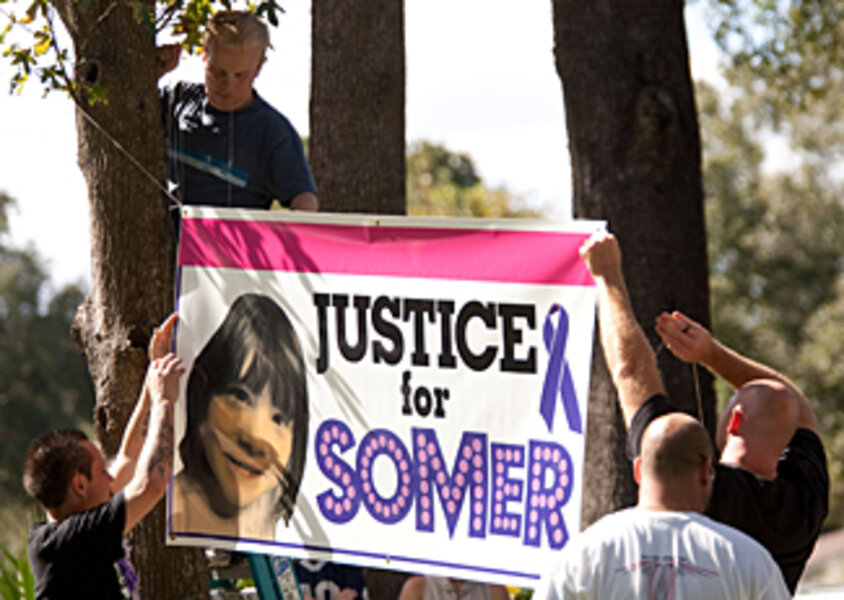Somer Thompson lived near 161 sex offenders. Is that number high?
Loading...
Authorities announced Thursday that they have found the body of seven-year-old Somer Thompson in a Georgia landfill 50 miles from her home. She was abducted Monday as she was walking home from school in Orange Park, Fla.
Police have said it was a homicide but have not reported any motives for the crime. They are interviewing convicted sex offenders living in Somer's community.
Florida's sexual offenders and predators registry, which is updated daily, shows 88 registered offenders live in Orange Park, and 161 offenders live within a five-mile radius of her home.
But experts say these figures are not out of the ordinary. With cities of all sizes increasingly limiting where sex offenders can reside, high-density clusters – sometimes with as many as 100 offenders living within one square mile – are becoming increasingly common.
"There are sex offenders living in all communities," says Jill Levenson, a professor of psychology at Lynn University in Boca Raton, Fla., who specializes in studying sex-crimes policy.
The number of offenders in the area surrounding Somer's home "may seem like a lot, but where do we think they're going to be living?"
Local ordinances prohibiting sex offenders from settling near schools, day care centers, and parks can affect the density of offenders in a particular area – a relatively new phenomenon, says Corey Yung, a professor at John Marshall Law School in Chicago.
Sex offender clusters exist in some parts of Florida – though Orange Park does not qualify.
• The Miami Herald recently reported on more than 70 sex offenders living under the Julia Tuttle Causeway in Miami because they couldn't find legal residences.
• Similarly, 35 sex offenders were found living in the same apartment complex outside Pahokee, Fla.
• A woman in central Florida has planned to open a day care center, thereby forcing 100 sex offenders to move out of the area, which includes a local school bus stop.
Florida – along with Georgia and Louisiana – tend to have the toughest sex-offender laws. It has the third most registered sex offenders in the nation and ranks sixth per capita.
"It's certainly one of the least welcoming states," says Professor Yung, who focuses on sex offender and criminal law.
This may contribute to Florida's relatively high number of offenders, but it also might provide a "false sense of security," says Professor Levenson.
She criticizes the registry, saying it does not assess an offender's risk to the community. "The registry is full of all kinds of different people," she says. "There's this huge list with little ability to distinguish between types of offenders."
A broad list, however, can have "benefits in investigative purposes," says Mary Coffee, a planning and policy administrator with the Florida Department of Law Enforcement. This is one of the original intended uses of the sex offender registry list, she says.
Individuals are also listed with information about their crimes, which can be as specific as their court or arrest reports, she adds.





